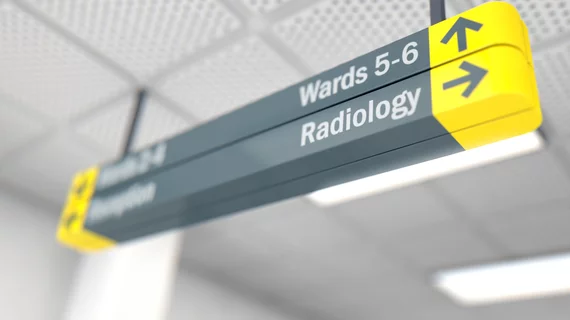Odds of inappropriate MRI referral jump 20% after physicians transition to hospital-backed employment
The odds of a patient receiving an inappropriate MRI referral jump by upwards of 20% after a doctor's transition from independent- to hospital-based employment, according to new state-wide data published in Health Affairs.
The separation of hospitals and independent practices has been a defining feature of U.S. healthcare, but physicians have been increasingly moving toward hospital-owned arrangements, researchers explained May 3. And with more than one-third in the U.S. employed by hospitals—either directly or indirectly—some experts have raised concerns about potential negative consequences in cost, quality and accessibility.
Researchers appeared to confirm some of those worries on Monday. For certain conditions, such as low back pain and nontraumatic knee pain, hospital employees in Massachusetts were much more likely to refer patients for MRIs overall, as well as guideline-discordant exams.
“Once employed by a hospital, physicians were more inclined to refer patients for MRI scans than before their employment,” Gary J. Young, director of the Center for Health Policy and Healthcare Research at Northeastern University in Boston, and colleagues explained.
Their conclusions are based on a difference-in-differences analysis of Massachusetts claims data spanning 2009-2016. Young and co-authors focused on MRI requests for lower back, knee, and shoulder pain. A detailed step-by-step process was used to determine if exams were inappropriate or not.
After a physician moved toward hospital employment, a patients’ probability of an MRI referral jumped by 31%, while their odds of receiving an inappropriate exam referral rose by 26%. And the authors found a majority of these scans were performed at the hospital employing the referring provider.
The results align with other studies, the authors noted, and raise the question: Why are these doctors more inclined to send patients for these MRIs?
They ruled out a lack of imaging guideline awareness, given their study compared referral patterns before transitioning to hospital-backed organizations. But they did suggest other answers.
“Hospitals potentially influence employed physicians’ referral decisions in several ways, including by directing physicians to order certain tests in connection with patient referrals for additional, in-house care,” the group wrote, adding the extent of such influence remains unclear but the financial incentive to do so clearly exists.
Young and colleagues acknowledged their home state historically ranks above the national average in terms of MRI scans per person, a potential limitation of their research. Either way, further investigation will be needed before acting on their findings.
“As the effects of hospital-physician integration on patient care become better understood, policymakers may consider using payment and regulatory mechanisms to either promote or impede the shift in physician services from physician-owned to hospital-based practices,” Young and co-authors concluded.
Read the entire study (paywall) here.

